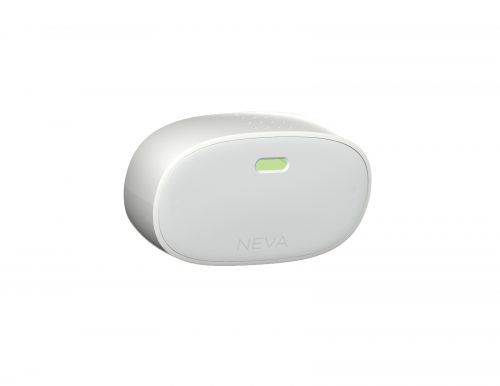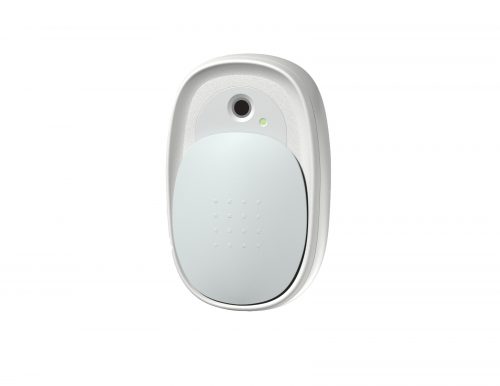Product Name: NEVA
Preface: As humans, our ability to detect illness and cure it has progressed so much in the past 100 years, we now detect irregularities in heartbeats and sugar levels just by strapping a smartwatch on our hand (Neithercott, 2015). Our ability to live longer has increased, but that does not necessarily mean that a long life is healthy. The accessibility to a decent and healthy lifestyle has only been increasing. However, globally one in three adults suffer multiple chronic illnesses. The leading cause of death has shifted significantly in the past 100 years, from infectious diseases in the 20th century to chronic illness in the 21st century. (Bodai et al., 2017). As a result, three out of five deaths globally are caused by four major chronic illnesses; cardiovascular disease, cancer, chronic lung disease, and Diabetes (Hajat & Stein, 2018). Early detection of symptoms and adopting healthy lifestyle recommendations can avoid more than 80% of chronic conditions. Nevertheless, the existing healthcare system and consumer-grade medical technologies are more focused on reactive care for chronic diseases than preventive care. This results in minimal information from health care practitioners and health care providers on implementing an effective, long-term plan to achieve health through our daily life; instead of the hospital
The Problem:
The article by the National Health Council reports that chronic illness limits 40 million Americans from doing their daily activities (Gurenlian, 2014). The chronic risk diseases pose to America is very evident as health economist and advisor Jane Sararsohn Khan discusses in her book. Almost 60 percent of the USA population has at least one type of chronic illness. (Sarasohn-Kahn, 2019). The effects of chronic disease extend to the economic productivity of the country.
Another research by authors Tara Hayes and Serena Gillian report shows costs associated with lost economic productivity due to chronic disease at $3.7 trillion, when including indirect costs. That amount is greater than the federal budget deficit in the USA. Successful healthcare management can result in a healthy workforce and put a country out of the financial crisis. Chronic disease treatments weigh up to an estimated 84 percent of healthcare costs. Public health insurance programs have even higher rates. 99% of Medicare and 80 percent of Medicaid spending went toward treating chronic diseases, as of 2010. This financial burden will only grow, given the correlation between chronic disease and age.
The Research Findings:
- We should stop treating the diseases during their onset and instead try to prevent them early on through early detection efforts.
- “Tracking few biomarkers and behavior patterns can help us understand the origins, progression and mechanism of Chronic diseases and help us prevent them early on” (Prasad et al., 2016)
- Tracking few biomarkers and behavior patterns through AI and IoT devices can help us understand the origins, progression and mechanism of the diseases
- We collect real-world chronic disease and check-in data to evaluate our method and analyze the correlation between lifestyles and chronic diseases.” (Wang et al., 2018)
- Saliva, Urine and Feces are complex biological by-products that are affected by your lifestyle, by monitoring these biomarkers can help us predict if you are prone to developing chronic illness.
Thesis Statement: Creating a prevention management system which uses longitudinal monitoring of health and lifestyle to prevent chronic illness; by creating actionable lifestyle interventions through diet manipulation and behavioral coaching.
NEVA: is a longitudinal health monitoring system that assesses both biological and environmental determinants of health and their interactions to predict, prevent and personalize healthcare.
Product system: NEVA is a 3 part product system
The Devices: Medical grade IoT devices which comprise a :
- Stool & Urine Analyzer
- Facial scanner
- Saliva analyzer
These devices screen for Inflammation, Heart Rate, Glucose levels, Gut microbiome composition (nutrition), Gut toxins levels etc.. Monitoring these biomarkers will help us understand how likely you are to get chronic illness and how we could treat it to prevent further complications.
Mobile Application: Your mobile applications show simplified data about your health and your progress towards your personal goals, which are a part of your prevention treatment prescribed by your health coach.
The mobile application also helps in tracking your lifestyle and behavior patterns to analyze along with your health data.
Health coach: Once the AI and product screens to find clinical signals predicting risk factors. The user is engaged with a trained and certified health coach. In order to help user act on their data and potentially improve their health, a Health coach worked on the behavior coaching, nutrition plan and physical wellness plan and talked participants through actionable possibilities from their data. Each month the coach will work with the participant and make recommendations for lifestyle changes with the aim of altering markers of known clinical significance and/or compensating for genetic predispositions.
These individual recommendations typically fall into one of several major categories: diet, exercise, stress management, dietary supplements, or physician referral. Coaching focus on four primary health areas: Cardiovascular, Diabetes, Inflammation, and Nutrition.
References:
Gurenlian, J. R. (2014). The power of prevention. National Center for Chronic Disease Prevention and Health Promotion, 12(1), 1–1. https://doi.org/10.1111/idh.12067
Hajat, C., & Stein, E. (2018). The global burden of multiple chronic conditions: A narrative review. Preventive Medicine Reports, 12(September), 284–293. https://doi.org/10.1016/j.pmedr.2018.10.008
Miller, I. J., Peters, S. R., Overmyer, K. A., Paulson, B. R., Westphall, M. S., & Coon, J. J. (2019). Real-time health monitoring through urine metabolomics. Npj Digital Medicine, 2(1). https://doi.org/10.1038/s41746-019-0185-y
Bodai, B. I., & Nakata, T. E. (2020). Breast Cancer: Lifestyle, the Human Gut Microbiota/Microbiome, and Survivorship. The Permanente Journal, 24, 1–14. https://doi.org/10.7812/TPP/19.129
About Chronic Diseases. (2020, October 7). Retrieved from National Center for Chronic Disease Prevention and Health Promotion: https://www.cdc.gov/chronicdisease/about/index.htm
Prasad, S., Tyagi, A. K., & Aggarwal, B. B. (2016). Detection of inflammatory biomarkers in saliva and urine: Potential in diagnosis, prevention, and treatment for chronic diseases. Experimental Biology and Medicine, 241(8), 783–799. https://doi.org/10.1177/1535370216638770
Price, N. D., Magis, A. T., Earls, J. C., Glusman, G., Lausted, C., Mcdonald, D. T., Kusebauch, U., Christopher, L., Zhou, Y., Qin, S., Moritz, R. L., Brogaard, K., Gilbert, S., Lovejoy, J. C., Hood, L., Biology, S., & N, T. A. (2018). A wellness study of 108 individuals using personal, dense, dynamic data clouds. 35(8), 747–756. https://doi.org/10.1038/nbt.3870.A Reducing the Burden of Chronic Disease. (2019).
Wang, Y., Zhou, X., Noulas, A., Mascolo, C., Xie, X., & Chen, E. (2018). Predicting the spatio-temporal evolution of chronic diseases in population with human mobility data. IJCAI International Joint Conference on Artificial Intelligence, 2018-July, 3578–3584. https://doi.org/10.24963/ijcai.2018/497















